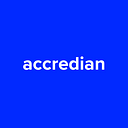How to get started with Data Science in 2020?
When one wants to start learning Data Science, the first thing that comes to one's mind is how to get started? This blog addresses this very question and as the saying goes,
“A good start is half done.”
One can have the following questions in their head when starting to learn Data Science:
- Do I need to learn to code?
- How much mathematics should I learn?
- Which language to choose — Python or R?
This blog will help you with answering these questions and get started with Data Science.
1. Choose a Language and stick to it
A difficult question which one faces in getting hands-on is which language should you choose?
This would probably be the most asked question by beginners.
The gist is that you start with the simplest of languages or the one with which you are most familiar with. If you are not as well versed with coding, you should prefer GUI based tools for now. Then as you get a grasp on the concepts, you can get your hands-on with the coding part.
Python and R are both great choices as programming languages for data science. R tends to be more popular in academia, and Python tends to be more popular in the industry, but both languages have a wealth of packages that support the data science workflow. We generally recommend Python.
You don’t need to learn both Python and R to get started. Instead, you should focus on learning one language and its ecosystem of data science packages. If you’ve chosen Python (our recommendation), you may want to consider installing the Anaconda distribution because it simplifies the process of package installation and management on Windows, OSX, and Linux.
Google Colab is a great resource for beginners to start coding in Python. Besides delivering us from all the installation blues, it provides great computing power and that too for free.
2. Maths
Let me put this in the most direct way possible: no matter how much time and effort you devote to it, you can never know enough math to read through all the Data Science literature. Different parts of Data Science use a variety of esoteric math.
Our advice is to do it the other way around (top-down approach), learn how to code, learn how to use Python (Pandas, sklearn, Keras, etc..), get your hands dirty building real-world projects. A beginner’s way to learn math for Data Science is to learn by “doing stuff.” So we’re going to tackle statistics, linear algebra or calculus by using them in real algorithms!
THEN, you’ll start to see the bigger picture, noticing your lack of theoretical background, to actually understand how those algorithms work, at that moment, studying math will make much more sense to you!
3. Join a peer group
Why is this important? This is because a peer group keeps you motivated. Taking up a new field may seem a bit daunting when you do it alone, but when you have friends who are alongside you, the task seems a bit easier.
The most preferable way to be in a peer group is to have a group of people you can physically interact with. Otherwise, you can either have a bunch of people over the internet who share similar goals, such as joining a course and interacting with the batchmates.
4. Take up a Course and Complete it
There are hundreds of courses out there which make things even worse as one finds it very difficult to choose the best one.
NEVER dive into a course simply because of the fancy and catchy titles. The main objective should be whether the course clears your basics and brings you to a suitable level, from which you can push on further. Once you’ve shortlisted a few courses that suit your needs, check out their respective reviews (very important!) by others before you pull out your wallet and get enrolled.
When you take up a course, go through it actively. Follow the coursework, assignments and all the discussions happening around the course. Now you have to diligently follow all the course material provided in the course. This also means the assignments in the course, which are as important as listening to the lectures. Only doing a course end to end will give you a clearer picture of the field.
Hope you find it useful.
If this blog helped you in any way, then do Follow and Clap👏, because your encouragement catalyzes inspiration for and help to create more cool stuff like this.
